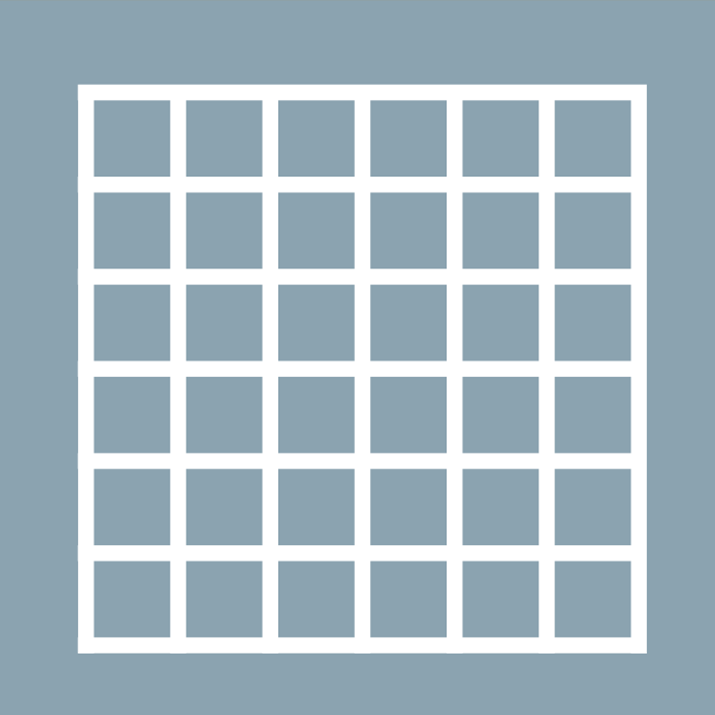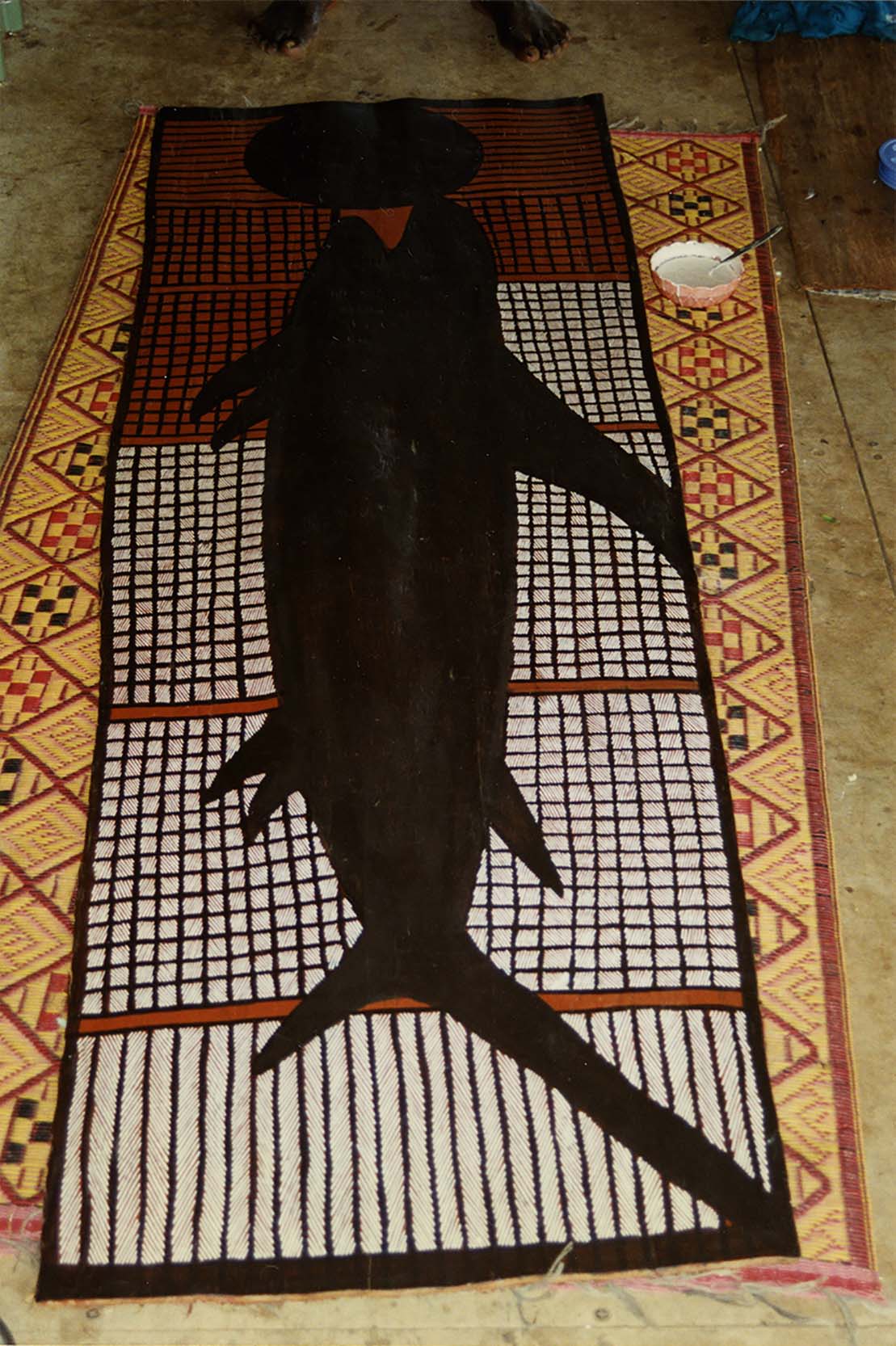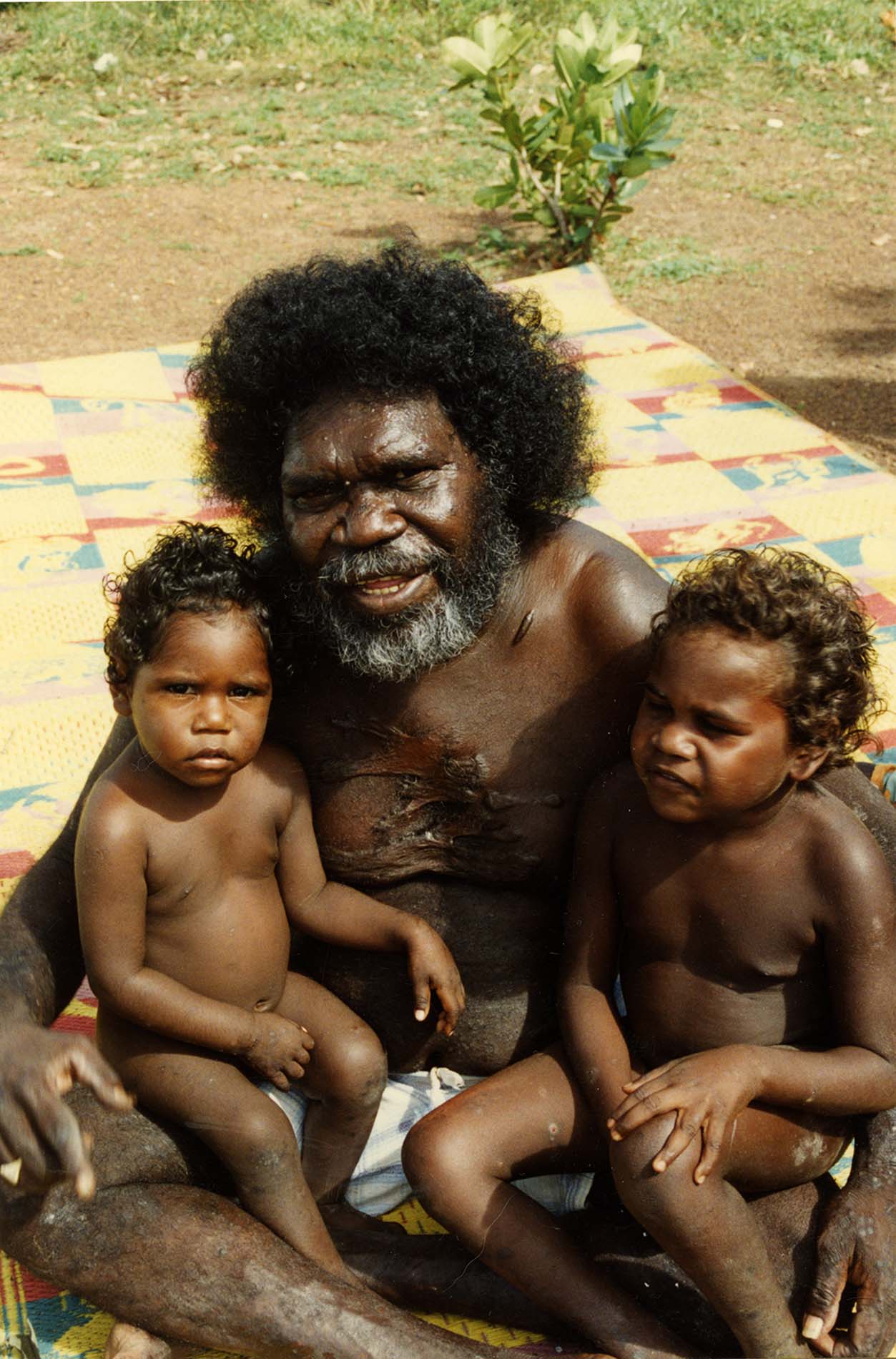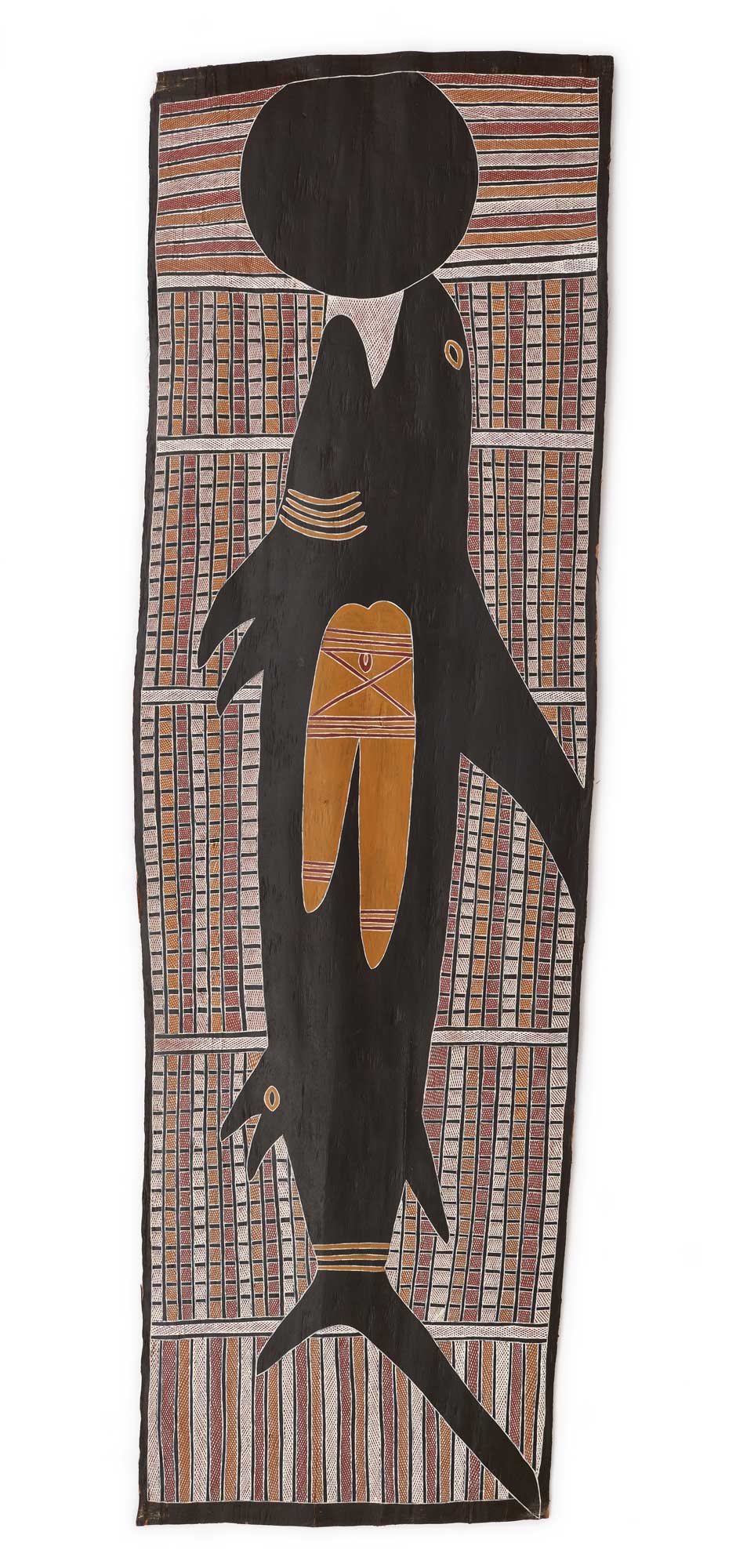
"Following the death of his father, Djutjadjutja Munuŋgurr in 1999, Minyapa became the leader of the Djapu' clan.
In the annals of Australian art history, there are few dynasties whose impact has been as profound as the Munuŋgurr family. Their patriarch Woŋgu was a figure of inestimable power, who had over twenty wives and sixty children. Working with the anthropologist Donald Thomson, in 1935 Woŋgu kickstarted the bark painting movement in northeast Arnhem Land, giving non-Indigenous Australians a new awareness of Indigenous justice and land ownership.
Skip forward sixty years, and it was Woŋgu’s son Djutjadjutja who rekindled this fire, ushering in a new era of monumental bark painting in the early 1990s through the Buku-Larrŋgay Mulka Art Centre.
Around Djutjadjutja emerged a school of talent arguably greater than his own—his wife Noŋgirrŋa Marawili, his daughers Marrnyula and Rerrkirrwaŋa, and his sons Minyapa and Meŋa forming the nucleus of new renaissance at Wäṉḏawuy.
Of this group, Minyapa was the least prolific: his entire output numbering less than a few dozen works. But each one is made with power and authority. Andrew Blake, who worked closely with Minyapa, described him as “large in everything.” As we stare into the shimmering grid, it is worth recognizing that Wäṉḏawuy Mäṉaŋur is a painting that is large in meaning—meanings that most of us will never know. For Miyapa, they were written into his being as a child of Mäna, a shark person, born of the earth as it was, is, and forever will be"
– HENRY SKERRITT
More Info
Mäna the ancestral shark is the major totem for the Djapu clan, whose homeland Wäṉḏawuy is set away from the coast of northeast Arnhem Land. In ancestral times Mäna traveled, passing through various Dhuwa moiety clan country and ended up at Wäṉḏawuy. Through the knowledge, objects and landforms that Mäna created, Djapu today affirm their right to his country. Thus, they have access to the ancestral power of the shark.
This painting is set against the classic Djapu clan design. It represents the freshwaters surrounding Wäṉḏawuy, both above and below the surface. Djatji and Lirrmunyun are words associated with this muddy water and Bowalyun is the the agitated movement of Mäna as he swims. The black roundel at the top of the painting is Rinydjalŋu, the entrance to the watery subterranean domain of Mäna.
– Buku-Larrŋgay Mulka Centre
Additional Information
Decade
1996
Medium
Natural pigments on eucalyptus bark
Dimensions (IN)
83 ½ x 32 ½
Dimensions (CM)
212 x 82.5
Credit
Kluge-Ruhe Aboriginal Art Collection of the University of Virginia. Gift of John W. Kluge, 1997. 1996.0035.008
Narrative
Gupa-Djapu’
The Gupa-Djapu’ clan is a Dhuwa clan. The most important spiritual themes of the Gupa-Djapu’...
Songline
Mäṉa | The Shark
Ancestral sharks, or mäṉa, play an important role in the songlines of several Dhuwa moiety...
Location
1990s
Buku-Larrŋgay Mulka Centre began the 1990s in a phase of rebuilding. By the end of...
About The Artist(s)
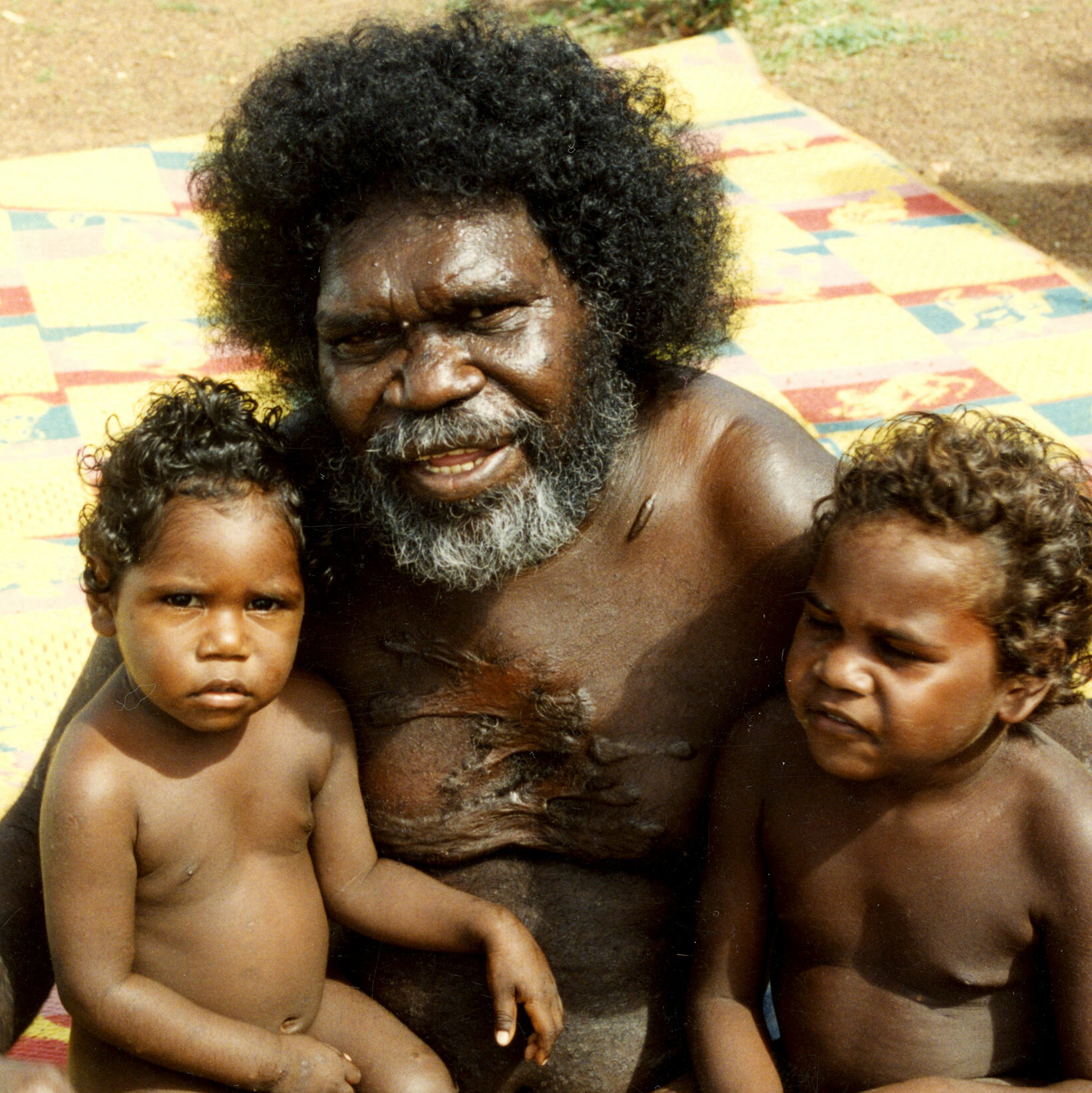
Clan
Gupa-Djapu’
Artist Dates
1948-2016
Alternative Names
Minyipa
Minyapa Munuŋgurr
Minyapa Munuŋgurr was eldest son of the artists Djutjatjutja Munuŋgurr and Noŋgirrŋa Marawili. An important song man for Djapu’ ceremony, he was not a prolific artist. Along with his wife, Yirrinyina Yunupiŋu, Minyapa was an important educator, teaching children about culture and ceremony, along with other community initiatives. In 1997, Minyapa was awarded first prize at the Barunga Festival Art Awards, Northern Territory.
Collections Represented
Art Gallery of Ballarat
Australian Catholic University
Australian Parliament House
Kluge-Ruhe Aboriginal Art Collection
